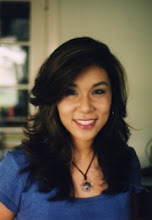
Alexie, Sherman. (2007). The Absolutely True Diary of A Part-Time Indian. New York: Little, Brown and Company. ISBN: 9780316013680
Plot Summary: Arnold “Junior” Spirit is a 16-year old Native American living on the Spokane Indian reservation while he dreams of becoming a cartoonist. Starting life with unusual medical challenges, including poor eyesight, seizures, a stutter and a lisp, as a result of enduring excessive cerebral spinal fluid, he becomes an awkward but thoroughly likeable teenager trying to understand his life. His world is filled with poverty, domestic violence and neighborhood boys who bully him everyday. Finding loving support in his beleaguered family, his troubled best friend and an encouraging teacher, Junior decides to transfer to an all-white high school in a nearby town. Despite being seen as a traitor by his own community, contending with culture shock and making friends out of reluctant classmates, Junior manages to deal with life's joys and profound tragedies with a rare sense of courage, humor and self-possession.
Critical Evaluation: It is interesting and touching to see how Junior must contend with disappointing elements of his own body, his own family and his own culture. He begins as a goofy kid who is just trying to get along, yet must find the courage to abandon his best friend, hide his family's poverty and move against his own culture. We see him make intelligent, difficult and humorous choices that shows his true maturity and inner confidence. This book offers a refreshing look at race relations within our country through the personal tale of an earnest and very typical teenager. It describes with sensitivity yet honesty the entrenched problems that are occurring within our Native American culture. Likewise it also depicts the misunderstandings and arrogance aimed towards this forgotten culture by privileged White Americans. The adventures (and misadventures) of this sympathetic character make the book topic appealing. The use of comic illustrations are also effective in conveying his unique perspective.
Reader’s Annotation: Arnold “Junior” Spirit wants a better life than what he experiences on the Spokane Indian reservation. Will this mean he has to give up his friends, family, culture and everything he has known? And how can he deal with the seriousness of these life decisions when all he wants to do is draw funny comics?
Information About the Author: Much like his character, Sherman Alexie was born on the Spokane Indian reservation and suffered the debilitating efforts of hydrocephalis surgery at a young age. Much of his novel is based upon autobiographical fact, including his attendance at Reardan High School and his love of basketball. A bright student, Alexie excelled in school and showed an early talent for writing. After attempts at a medical degree, Alexie pursued poetry, writing under the tutelage of Chinese American writer, Alex Kuo, who encouraged him to find his literary voice and write about his own experiences. Since then, Alexie has received many awards, such as the Boston Globe-Horn Book Award for Excellence in Children’s Literature in Fiction, the National Book Award for Young People’s Literature, the Los Angeles Times Favorite Children’s Books, the New York Times Notable Children’s Books, National Parenting Publication Gold Winner Award, Kirkus Reviews Best Young Adult Books and the National Endowment for the the Arts Poetry Fellowship. The author of 14 novels and poetry books, Alexie has received much critical acclaim. He lives with his wife and two sons in Seattle.
Genre:
Teen Issues: Physical Challenges, Racism, Physical and Emotional Abuse
Contemporary Life: Outsiders, Coming of Age, Humor
Multicultural Fiction: Native Americans, Multiple Cultures & Culture Clash
Curriculum Ties: English class, Ethnic Studies class, Art Class, Book Clubs, Social Clubs, Recommendations for Reluctant Readers and Recommendations for Young Adult Male Readers
Booktalking Ideas:
1.) How different races view each other (stereotypes, assumptions, foods, traditions, infatuation with the “other”)
2.) How native american history affects life on reservations (problems with poverty, self-identity, alcoholism, crime, violence, pride, relationships)
3.) How Junior contends with his adolescent physical, emotional and speech difficulties with humor and honesty
4.) Exploration of relationships between Junior and his father, mother, grandmother, best friend Rowdy, sister Mary Runs Away, Mr. P., Eugene, Penelope, Gordy and Roger
5.) Junior’s feelings about his father’s alcoholism
Reading Level/Interest Age: Grades 9-12
Challenge Issues/Defenses:
Potential Challenges:
• Discussions about masturbation
• References to homosexuality
• Depictions of domestic violence
• Adult language
• Racist language
Defense Strategy:
• Provide our Collection Development Policy (which includes Young Adult scope): http://ww2.cityofpasadena.net/library/collection.asp
• Refer to book reviews and awards earned by this book: http://www.fallsapart.com/truediary.htm
• Refer to positive personal reviews and commentary from actual readers: http://www.amazon.com/Absolutely-Part-Time-Indian-Alexie-Sherman/dp/0316013684
Why This Book Was Included: There’s so much good stuff in this book that would appeal to this age group and make it relevant to their perspectives. First of all, finding quality young adult fiction for young males can be tough, but this one has just the right balance of visual comics, humor, tragedy, joy and sarcasm. The main character shows readers that it’s possible to feel like an undeserving geek, yet also be cool enough to win unlikely friends, rise above difficult challenges and find beauty in his ethnic identity. Junior’s ability to recognize his own shortcomings, yet tap into his own masculine ambitions, sexual longings, competitive spirit for basketball and relations with his father, teacher, coach and best friend all convey a message of hope, integrity and self acceptance to reader. Also, the book is very timely with its inclusions of email messages and popular media references. It’s a book that is told simply, yet belies complex feelings that every teen must endure in order to truly find themselves.






